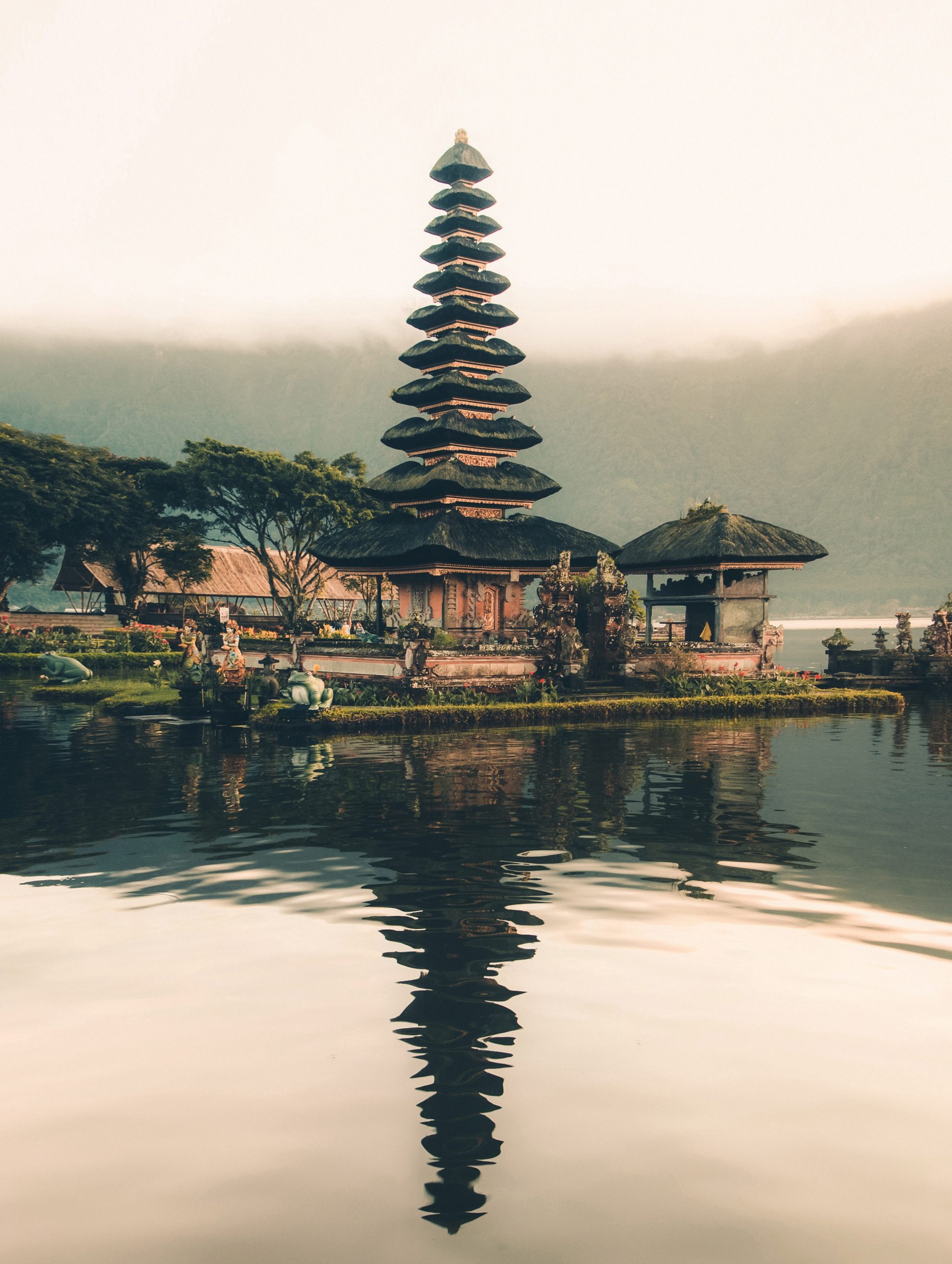Exploring Bali’s Temples and Culture
Bali, the enchanting Indonesian island known for its lush landscapes, pristine beaches, and vibrant culture, is a destination that beckons travelers from all corners of the globe. While Bali offers a wide range of experiences, from its beautiful beaches to its lush jungles, one aspect of its allure that often stands out is its rich tapestry of temples and cultural traditions. In this travel blog, Green Sun Travel will take you on a journey through some of Bali’s temples and culture experiences, providing you with insights into the island’s spiritual and historical heritage.
Bali’s Temples and Culture
Uluwatu Temple – A Majestic Cliffside Oasis
Uluwatu Temple is a gem hidden amongst the towering cliffs that guard Bali’s southwestern coastline. Perched on the edge of a dramatic limestone cliff, this ancient sea temple is a testament to Bali’s rich heritage. As you approach the temple, you’ll feel a sense of reverence, not only for its spiritual significance but also for its breathtaking location. The panoramic views of the Indian Ocean are awe-inspiring and have the power to make even the most seasoned traveler stand in quiet admiration. This is a place where the elements—earth, water, air, and fire—all come together in perfect harmony.
Uluwatu Temple is also known for its captivating traditional Kecak dance performances that take place daily. As the sun dips below the horizon, you’ll witness these mesmerizing performances set against the backdrop of the temple’s grandeur and the vast expanse of the ocean. The Kecak dance tells stories from the ancient Hindu epic, the Ramayana, and the rhythm of the chant and the dance are hypnotic. It’s an otherworldly experience, and you’ll find yourself lost in the stories and the magic of Bali.
Tanah Lot Temple – The Iconic Sea Temple
Tanah Lot Temple is one of Bali’s most iconic and photographed landmarks, and for good reason. The temple is situated on a rock formation in the midst of the sea, making it appear as though it’s floating on the water. The view is simply spectacular, especially during sunset when the warm hues of the setting sun cast a magical glow over the temple and the surrounding shoreline.
But Tanah Lot is more than just a beautiful sight; it is deeply tied to Balinese Hinduism. You’ll have the opportunity to learn about the significance of the temple, which is dedicated to the sea spirits, and the rituals performed here. Visitors can also explore the vibrant market near the temple, where local artisans sell their crafts and you can pick up souvenirs to remember this stunning location.
Besakih Temple – Bali’s Mother Temple
Besakih Temple, often referred to as the “Mother Temple,” is a testament to Bali’s temples and culture. Nestled on the slopes of Mount Agung, Bali’s highest peak, this temple complex is not only the largest on the island but also the holiest. The towering gateways and intricate stone carvings are a testament to the architectural brilliance of the Balinese people.
As you explore the temple, you’ll likely come across locals adorned in traditional attire, engaged in prayer and offerings. The atmosphere is filled with the scent of incense and the sounds of rituals, creating a profoundly moving experience. Besakih Temple’s grandeur and spiritual significance are a vivid reflection of Bali’s deep-rooted devotion to its Hindu traditions.
Tirta Empul – The Sacred Water Temple
Tirta Empul, the Sacred Water Temple, offers a unique opportunity to immerse yourself in Bali’s spiritual customs. The highlight of the temple is its crystal-clear spring water, believed by locals to possess healing properties. Visitors can participate in a traditional purification ritual here, which involves bathing under the numerous spouts that continuously pour forth fresh spring water. This experience is not just a cultural activity; it’s a profoundly spiritual one that allows you to connect with the island’s ancient traditions and the Balinese people’s strong spiritual beliefs.
Ubud – The Cultural Heart of Bali
Ubud, often dubbed the Bali’s temples and culture, is a town nestled amidst lush rice terraces and tropical forests. Beyond its stunning natural beauty, Ubud is a hub for the island’s vibrant arts and culture scene. You can explore the numerous art markets, showcasing intricate wood carvings, handwoven textiles, and beautiful paintings. While in Ubud, attending traditional dance performances is a must. These performances, held at various venues in and around the town, depict tales from Hindu epics and local folklore through elaborate costumes, precise choreography, and expressive movements.
Visiting the Ubud Palace, a historic royal residence, allows you to witness traditional Balinese architecture and learn about the town’s history. Venturing into the surrounding villages will give you a glimpse into the lives of skilled artisans who create the beautiful handicrafts that Bali is renowned for. Don’t miss the chance to see artisans at work, crafting intricate jewelry, batik fabrics, and wood carvings, all of which make for memorable souvenirs and an authentic cultural experience.
Balinese Cuisine – A Culinary Adventure
Besides Bali’s temples and culture, Balinese cuisine is an essential part of the island’s culture, and exploring the local food scene is a journey in itself. Bali’s culinary offerings are diverse, flavorful, and an absolute delight for food enthusiasts. Here’s an in-depth look at some of the most beloved Balinese dishes and the unique dining experiences you can enjoy:
- Nasi Goreng (Fried Rice): Nasi Goreng is one of Indonesia’s most famous dishes and a staple in Balinese cuisine. It’s a fragrant and flavorful dish made with stir-fried rice, often accompanied by a combination of vegetables, chicken, prawns, or even tofu. The dish is seasoned with a delicious blend of sweet soy sauce, garlic, shallots, and chili, giving it a distinctively Indonesian taste. It’s typically served with a fried egg on top and is a satisfying and comforting choice.
- Babi Guling (Suckling Pig): Babi Guling is a sumptuous and indulgent dish that’s often reserved for special occasions and ceremonies. The highlight of this dish is the roast suckling pig, which is marinated with a mixture of turmeric and other fragrant spices. The result is crispy, golden skin and tender, succulent meat. Babi Guling is typically served with an array of accompaniments, such as lawar (a mix of vegetables, coconut, and coconut milk), sate lilit (minced seafood or chicken skewers), and sambal (spicy chili paste). It’s an explosion of flavors and a must-try for any food lover.
- Rendang (Spicy Meat Stew): Rendang is a savory and aromatic meat stew that originated in Indonesia. It’s known for its complex and rich flavors, combining coconut milk with a medley of herbs and spices, including lemongrass, garlic, ginger, and turmeric. Beef or sometimes chicken is slowly cooked in this flavorful mixture until it becomes tender and incredibly flavorful. The result is a mouthwatering, slightly spicy, and intensely fragrant dish that is often served with steamed rice. Rendang is a beloved Indonesian classic and a testament to the depth of the country’s culinary heritage.

When it comes to savoring these delectable dishes and experiencing authentic Balinese flavors, local warungs are the way to go. Warungs are small, family-owned restaurants that offer a genuine taste of Balinese cuisine. Dining at a warung provides an opportunity to connect with the local culture and people. The intimate atmosphere, friendly staff, and the use of fresh, locally sourced ingredients add to the charm of these establishments.
At a local warung, you can expect your food to be prepared with care and a deep appreciation for tradition. The authenticity of the dishes shines through, and you’ll have the chance to try not only the well-known Balinese dishes but also various regional specialties.
Additionally, exploring the local food markets is another way to dive into the vibrant food culture of Bali. Markets like Ubud’s Pasar Ubud and Badung Market in Denpasar are excellent places to sample street food and local delicacies. These markets offer a colorful and lively atmosphere, where you can taste everything from satay skewers to tropical fruits and sweet treats.
Conclusion
Bali’s temples and culture are a testament to the island’s rich history and spiritual depth. As you explore the island’s ancient temples, partake in traditional rituals, and immerse yourself in its vibrant culture, you’ll find that Bali is not just a destination; it’s a journey into the heart and soul of Indonesia. With its stunning landscapes, warm-hearted people, and profound spirituality, Bali’s allure is bound to captivate your heart and leave you with memories to cherish for a lifetime. So, pack your bags and embark on this cultural odyssey through Bali’s temples and traditions – an experience that promises to be truly extraordinary.








